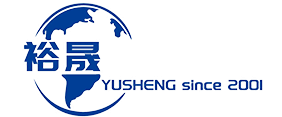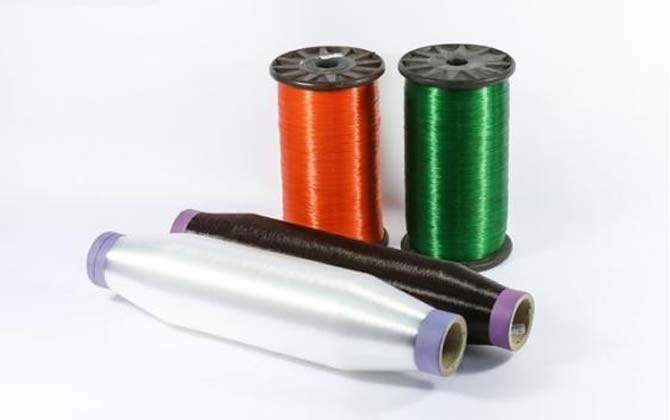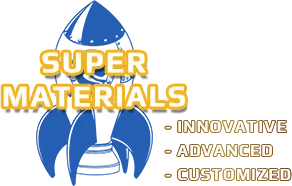

The cord fabric is an automobile tire skeleton reinforcement material, its weight accounts for about 10%-15% of the total weight of the outer tire, by the multi-layer impregnated cord to rubber bonding, to enhance the role of the wheel body strength, high technical content, its raw materials include nylon, polyester, steel wire, etc.. Among them, polyester tyre cord fabric has high modulus, good maneuverability, high strength, low elongation at break, high fatigue resistance, high dimensional stability, small thermal shrinkage, etc., and has strong advantages in price.
The upstream raw materials of cord fabric are mainly polyester, nylon, steel wire and glue, etc. The production process includes low viscosity slicing, viscous slicing, spinning, twisting, weaving and rubber dipping. The downstream is mainly used in automobile tires.
1. The industry chain upstream polyester cord fabric main material for polyester industrial filament. From the polyester production, in the past 20 years, with the completion of the overall layout of China's basic chemical raw materials for the consumer side, as well as the rise of China's private capital, the production of polyester in China is also gradually increasing. According to the data, in 2020, China's polyester industry output of 49,227,500 tons, an increase of 3.62%, of which polyester filament production accounted for 78.6%, at 3,869,800 tons, and polyester staple fiber was 10,534,900 tons.
The main material of nylon cord fabric is nylon. From the nylon production, according to the China Chemical Fiber Industry Association data, China's nylon production from 2,112,800 tons in 2013 to 3,842,500 tons in 2020, during the compound annual growth rate of 8.92%.
2. Industry chain midstream
From the production of cord fabric, according to the China Textile Industry Development Report, China's tyre cord fabrics production in 2020 is 642,200 tons, up 3.15% year-on-year. From the industry segmentation production structure, polyester cord fabric production is slightly larger than nylon chain fabric, and the combined production of polyester and nylon cord fabric accounts for nearly 80%. According to statistics, in 2019, polyester cord fabric production was 265,000 tons, accounting for 41.3%, nylon cord fabric production was 245,000 tons, accounting for 38.2%, and other cord fabric production was 132,200 tons, accounting for 20.5%.
3. Industrial chain downstream
The cord fabric is mainly used in automobile tires. From the tire production structure, at present, Europe, America, Japan and other developed countries, the radialization rate of tires has basically reached 100%, the radialization rate of domestic tires in 2019 is 94.48%, and the radialization rate in 2020 decreases slightly to 94.01%. In the future, as the domestic tire radialization rate continues to improve, polyester cord fabric will continue to replace the nylon market share, China's polyester cord fabric there is still a certain amount of upward space.
From the viewpoint of polyester cord fabric import and export data, China is the largest exporter of cord fabric. However, due to the outbreak of the trade war between China and the United States and the 25% tariff imposed by the United States on China's polyester cord fabric, the export volume is fluctuating down from 2018 to 2020 and rising sharply in 2021. According to statistics, the export quantity of polyester cord fabric from China in 2021 is 145,200 tons and the export value is 422 million USD.
From the export quantity of countries accounted for the situation, China's polyester cord fabric exports to Asia accounted for 72.28%. Specifically, Thailand accounted for 22.62%, Japan accounted for 15.97%, India accounted for 8.76%, South Korea accounted for 8.41%, Russia accounted for 4.08%.
The cord fabric industry has high certification barriers. As an important tire skeleton material, cord fabric is not only closely related to the safety of tires and vehicles, but also directly related to the safety of drivers and passengers' lives. Therefore, each tire manufacturer will go through strict certification for the raw materials purchased for cord fabric, and the certification period for cord fabric products is long, usually taking about two years, and longer for bulk purchase.
We Value Your Privacy.
Our website uses cookies to improve your experience. By clicking "Accept All Cookies", you agree to the storing of cookies on your device to enhance site navigation, analyze site usage, and assist in our marketing efforts.
 English
English 日本語
日本語 한국어
한국어 français
français Deutsch
Deutsch Español
Español italiano
italiano русский
русский português
português العربية
العربية tiếng việt
tiếng việt





